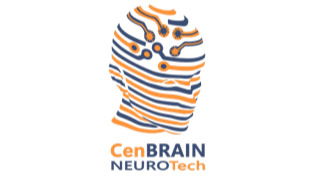
Mohamad Sawan
M.Sc., Ph.D., FIEEE, FRSC, FCAE, FEIC, O.Q., Chair Professor, Westlake University, and Emeritus Professor, Polytechnique Montréal.
To achieve the implementation of advanced medical devices, we are focusing on design methods and mixed-signal (analog, digital & RF) circuit techniques, as well as system integration addressing different specific needs and requirements. These devices must be evaluated ex and in vivo in collaboration with surgeons from specific domains.
Proposed research projects are based on previous contributions including a range of building blocks in various circuit modes; time, voltage and current modes, and span a variety of domains.
The focus has been on System on Chip (SoC) design and testing. A typical SoC includes analog, digital and RF circuits for wireless communication and signal and image processing. Contributions include modeling the effect of electromagnetic signals, remote measurement, offset cancelation, selective stimulation, full-duplex data transmission of remotely powered devices, electrical and optical stimulators, interface to biosensors, microelectrode-to-tissue interfaces, pressure sensor for respiration, hand-held ultrasound monitor, electroneurogram processing, flip-chip hybrid assembly, amplifiers, filters, data converters, frequency lock-loop, DC-free biphasic current sources, etc. In these designs, special attention has been paid to optimizing energy consumption and surface occupancy without compromising reliability and flexibility. Below are presented a few completed and upcoming research projects.
Analysis, design, implementation and validation of wearable and implantable smart medical microdevices for diagnosis, treatment and prediction of neurodegenerative diseases. Specific research fields include: Artificial intelligence algorithms and hardware for multi-modal data analysis; Analog and mixed-signal circuits intended for efficient deep-learning algorithms; Wearable multimodal EEG/fNIRS neuroimaging and stroke prediction; Neural coding and cortical stimulation to recover vision for blinds; Biosensor, and Lab-on-chip for neurotransmitters and living cells analysis; Epileptic seizures localization, onset detection and prediction; Brain imaging based on EEG, fNIRS and Photoacoustic techniques for Stroke monitoring and prediction; Vision age-related dysfunctions (AMD, Retinitis Pigmentosa, etc.) rehabilitation; Bladder controller and artificial sphincters addressing blockade and incontinence; Energy and data communication solutions for wearable and implantable devices.
These multidisciplinary projects cover areas such as electronics, computer architectures, biomedical engineering, optics and photonics, acoustics and electromagnetics. Our activities are expected to result in medical devices targeting neurodegenerative diseases such as vision (age-related macular degeneration), Apnea, Stroke, Epilepsy, etc. The main undertaken research projects are:
Tools and experiments to help understanding neurodegenerative diseases – Exploration of the brain is the most challenging scientific problem of the 21st century. Hundreds of billions of nerve cells construct the foundation for the cognition, thinking, consciousness, and language functions of human beings. This project aims to elucidate the basic principles of neural networks, neurotransmitters and information representation in the brain from a multidisciplinary perspective and give solution to neurodegenerative diseases that have plagued modern humans for a long time. On system-level, CenBRAIN work on the development and validation of medical systems and devices for early intervention, treatment, and rehabilitation of degenerative diseases such epilepsy, age-related macular degeneration, Parkinson’s etc. On microelectronics level, CenBRAIN design essential micro to millimeter integrated circuits including analog front-end for neural activity recoding, mixed signal system-on-chip (SoC) for neural activity interpretation and neurostimulators for close-loop neuromodulation to bridges the brain and the electronic world. At the molecular level, CenBRAIN study the mechanism of neurotransmitters and neural networks and monitor neural activity with microelectrode array to understand the principle of neurons behavior. This research in turn helps us to design better medical devices and systems for the treatment of neurodegenerative diseases and allows us to develop novel artificial intelligence circuits and computing paradigms. (Westlake University KP Project).
System Packaging based Smart Wearable Closed-loop TMS Neuromodulation System for Addiction Treatment (2020-…) – Transcranial magnetic stimulation (TMS) is a clinic-proven neuromodulation technique that can treat various neurological and psychological diseases. However, existing TMS devices are bulky, expensive, and open loop. Therefore, they can only be used in fixed locations, and the modulation effects cannot be measured. In this project, a wearable close-loop neuromodulation system that integrates real-time EEG/fNIRS recording and TMS is proposed. The system includes orchestrated front-end integrated circuits design that can acquire high-quality, multi-channel EEG and fNIRS signals simultaneously, dedicated intelligent digital processor that performs various machine learning algorithms in real-time and a portable TMS device that can convert 220 V voltage to 1100 V high voltage for the inducing of magnetic stimulation. The real-time multimodal signal monitoring and analysis ability allows clinicians to better study the treatment of various brain disorders before and after the TMS stimulation. Validation and clinical experiments of the proposed system are undertaken with the 2nd affiliated hospital of Zhejiang University. Around 20 methamphetamine abusers will be treated with the proposed close-loop system, various performance factors will be formed along the experiments and effective treatment protocols will be developed to improve the withdraw rate of drug abusers. (Zhejiang Key Project).
Wearable Imaging Devices for Efficient COVID-19 Sensing, Detection and Treatment (2020-…)– The outbreak of Covid-19 pandemic has created significant burden on various medical resources including PCR, CT, MRI and ventilators. This project proposes a wearable end-to-end system for the monitor, diagnosis, and assistant of Covid-19. The system composed of a miniaturized biosensor for rapid on-site Covid-19 detection, a wearable photoacoustic imaging device for the monitoring of the upper respiratory tract and lungs and respiratory stimulation circuits to assist patients who have difficulty breathing or resume spontaneous breathing. The nanoporous based biosensor has features such as high-surface area for biomolecular immobilization, nanopore exclusion of non-specific species, and versatile biochemistry processing for biofunctionalization. The biosensor can used daily without the need of trained medical staff and clean environment. The photoacoustic imaging device utilize flexible integrated photonic devices for high sensitivity photoacoustic imaging. The magnetic based respiratory stimulation circuits can stimulate the hypoglossal nerve in a non-invasive fashion, thereby lower the surgical risks. The proposed system provides a low-cost and wearable alternative for the diagnosis, detection and treatment of the Covid-19 cases and can significantly reduce the pressure on medical resources in the cases of concentrated outbreak. (Zhejiang Innovation Team).
Label-free Biosensors for Accurate Point-of-Care Detection of COVID-19 (2020-…). In light of the urgent need for on-site efficient detection of COVID-19, a label-free biosensor based on nanoporous silicon devices with dedicated optical and electrical readout interfaces is proposed. In fact, available nucleic acid amplification-based portable equipment does not allow high-throughput detection, and existing precise methods need trained personnel and clean environment which means large analysis delay.
The proposed immunosensor exploits desirable properties of nanoporous silicon, such as high-surface area for biomolecular immobilization, nanopore exclusion of non-specific species, and versatile biochemistry processing for biofunctionalization. Samples are processed within microfluidic structure, which is integrated on top of the measurement interface to achieve all-in-one operation. Biosensor optimization towards efficient virus detection will be validated in Zhejiang Center for Disease Control and Prevention. Afterwards, clinical tests of the biosensor will be resumed in affiliated hospital of School of Medicine of Zhejiang University. Key performance factors such as sensitivity, specificity, accuracy and stability will be characterized and compared with qPCR and sequencing, in terms of virus detection in clinical samples including pharynx swab, bronchoalveolar lavage fluid and manure.
Artificial Intelligence (AI) Learning Implementations for Medical and Robotic Applications (2019-…). AI algorithms typically require long-relaxation phase that is costly to simulate on digital hardware. But it can be accelerated through analog circuit implementation, which results on increasing computation speed and lowering power consumption. The main long-term aim of this project is to design, implement and train analog and mixed-signal integrated circuits to perform Deep Neural Networks (DNN) – based algorithms for several healthcare and robotic applications. In order to achieve the above long-term objective, we proposed the following steps: Deeply analyze and compare the main deep learning artificial intelligence techniques: Convolutional NN (CNN), Multi-Layer Perceptron (MLP), and Long Short-Term Memory (LSTM). Adopt efficient algorithms minimizing the overall energy to operate; and accelerate the execution time of adopted algorithms. Quick prototyping and proof of concept using; High-performance generic (configurable) custom System-on-chip (SoC) implementation using advanced standard CMOS process; Implement Mixed-signal (analog/digital) circuits based DNN relying on dynamics instead of computation; Adopt resistive-based computing strategy; Explore hybrid architectures to train fully-connected deep neural networks; Use memristor-based arrays to reduce area comparing to regular CMOS circuits. Propose improved memristor device to achieve the dynamic evaluation of DNN; Bypass the low-precision limitation of analog circuits by the training of a specific circuit to perform the desired jobs.
Versatile Systems-on-Chip Integration to Reduce Aircraft Weight and Gas Emission (2018-21). Nowadays the number of sensors, actuators and corresponding bulky electronic systems as well as their related power and data cables, which occupy a remarkable space and increase the weight of aircrafts, are rapidly growing in modern aircrafts. Reconfigurable systems, System-on-chip (SoC), and system-in-package (SiP), are alternatives to achieve that level of miniaturization. Integrated building blocks will not only have impacts on reducing the weight of aircrafts and its consequences, but it also will be versatile due to sensor and actuator specifications. Different sensor interfaces will be integrated over SoCs or SiPs. Such interfaces generate required currents and voltages to excite different sensors and actuators, e.g. linear variable differential transformers, through power electronic circuits e.g. power amplifiers. That is why the sensor interfaces must be versatile. Read back circuits, which includes filters, sense amplifiers and data converters, are supposed to monitor and control the sensor interfaces. Once integrated, different chips will individually be evaluated first and the individual characterized chips will be integrated on a single package to provide a miniaturized sensor interface prototype. These efforts bring economic and environmental benefits by drastically diminishing the consumed fuel and greenhouse emissions, respectively.
Equilibrium Propagation Framework (Equiprop): Analog Implementation for Improved Performances (2018-20). This project concerns a research topic that will be mutually beneficial for two domains: machine learning and analog electronics. On the one hand, super-fast low-power hardware implementations of deep neural networks could impact all applications of deep learning, while on the other hand, the proposed research is an application of deep learning concepts which could change the whole field of analog circuit design by making it robust to fabrication variations, mismatch, and non-linear departure which plague traditional analog hardware. The main aim of this project is to implement and train analog circuits to perform the Equilibrium Propagation algorithm. To do so, two main phases will be applied: 1) Prototyping and proof of concept using an FPAA platform, which compensates for the problems caused by the inherent mismatch in transistor geometry and reduces the time-to-market; 2) High-performance custom System-on-chip (SoC) implementation using CMOS process. Chip area can be reduced very significantly, and processing speed can be improved over an FPAA implementation. It also helps to bias transistors in their different operating regions (e.g. in sub-threshold region) to dramatically lower power consumption.




